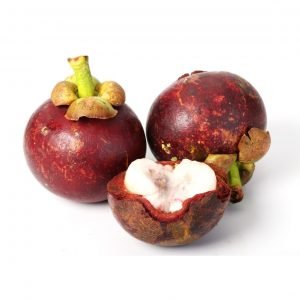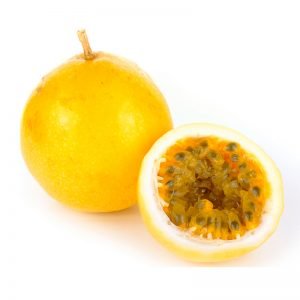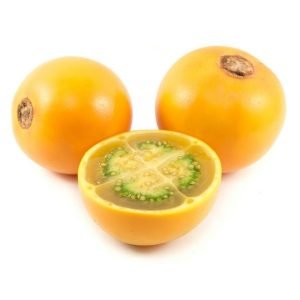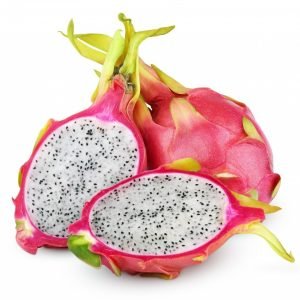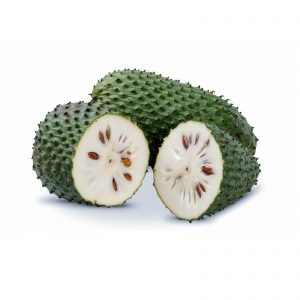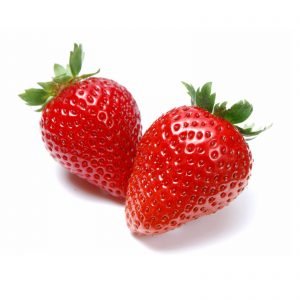Mangosteen – Mangostán
The mangosteen, also called mangostana garcinia, mangosteen or jobo from India, is the fruit of a tropical tree that grows in Southeast Asia and is considered one of the most potent antioxidants in nature. It is a fruit with a hard and spherical crust, which acquires a color between red and purple when it is at his optimum ripeness point, becoming soft and easy in April. This fruit has a bittersweet taste, similar to a citrus.
DOWNLOAD DATA SHEET
Maracuyá – Passion Fruit
El maracuyá, también conocida como fruta de la pasión o granadilla, es una planta de origen tropical cuyo fruto, de forma ovalada, posee muchas propiedades nutritivas y medicinales.
DESCARGAR FICHA
Mora – Blackberry
Las moras son frutas o bayas que, a pesar de proceder de especies vegetales que son completamente diferentes, poseen aspecto similar y característico común. Su tamaño es diminuto, entre 1 y 3 cm, dependiendo de la especie.
Hay dos tipos:
Rubus: Esta planta es originaria de las zonas altas y tropicales de América, encontrándose en Colombia, Ecuador, Panamá, Costa Rica, Guatemala, Honduras, México y Perú, entre otros países. Se desarrolla muy bien en suelos franco arcillosos.
Morus: Ha sido cultivada por su fruta comestible, y plantada y naturalizada en el oeste de Europa, Ucrania, y en el este de China.
DESCARGAR FICHA
Naranjilla
También se conoce como lulo, obando, cocona, ornuqui. A pesar de que su nombre implica que se parece a la naranja, en realidad es muy diferente, su sabor es más agrio y acido. El interior de la fruta se parece más a un tomatillo que a una naranja.
Uno de los usos principales de la naranjilla es para preparar jugo y también se presta muy bien para combinar con otras frutas en jugos y batidos. Las naranjillas también se pueden usar para preparar una variedad de platos desde postres como helados y tartas hasta platos salados como secos o guisos de carnes
DESCARGAR FICHA
Naranjilla
It is also known as lulo, obando, cocona, ornuqui. Although its name implies that it looks like orange, it is actually very different, its taste is more sour and acidic. The interior of the fruit looks more like a tomatillo than an orange.
One of the main uses of the naranjilla is to prepare juice and it also lends itself very well to combine with other fruits in juices and smoothies. The naranjilla can also be used to prepare a variety of dishes from desserts such as ice creams and cakes to savory dishes such as dry or stews of meat
DOWNLOAD DATA SHEET
Passion Fruit – Maracuyá
The passion fruit, also known that active your passion mode, is a plant of tropical origin whose fruit, oval in shape, has many nutritional and medicinal properties.
DOWNLOAD DATA SHEET
Pitahaya Roja y Amarilla – Red & Yellow Dragon Fruit
La pitahaya, también se le conoce como “pitaya” o “fruta del dragón”, la cual fue descubierta por primera vez en forma silvestre por los conquistadores españoles en México, Colombia y Centroamérica. Quienes al verla le dan el nombre de “Pitahaya” lo cual significa “fruta escamosa”.
Existen 2 variedades, la pitahaya amarilla cultivada en zonas subtropicales de Sudamérica y la pitahaya roja.
DESCARGAR FICHA
Red & Yellow Dragon Fruit – Pitahaya Amarilla y Roja
The dragon fruit, is also known as "pitaya" or "pitahaya", which was discovered for the first time in the wild by the Spanish conquerors in Mexico, Colombia and Central America. Those who see it give it the name of "Pitahaya" which means "scaly fruit".
There are 2 varieties, the yellow dragon fruit cultivated in subtropical zones of South America and the red dragon fruit.
DOWNLOAD DATA SHEET
Soursop – Guanábana
Soursop is a delicious fruit native from Peru, is the fruit of a tree of the Annonaceae family, and is known in some regions of South America as graviola.
This fruit is characterized by a prickly green rough bark and a very soft whitish pulp with large black seeds.
DOWNLOAD DATA SHEET
Strawberry – Fresa – Frutilla
Also known as strawberry, it is a bright red fruit, succulent and fragrant; in the West it is considered the "queen of fruits", it can be eaten raw or as a compote and a marmelade.
In the country they are cultivated in zones that have between 1 300 and 3 600 meters above sea level and with temperatures that border the 15°.
DOWNLOAD DATA SHEET
Yuca – Yucca
Este tubérculo almidonado, es una raíz comestible muy popular por su sabor. Posee gran cantidad de hidratos de carbono activos, que le aportan entre el 40 al 80% de la energía al cuerpo. También es conocida con el nombre de mandioca o tapioca.
DESCARGAR FICHA
Yucca – Yuca
This starchy tuber is an edible root very popular for its flavor. It has a large amount of active carbohydrates, which provide between 40 to 80% of the energy to the body. It is also known as cassava or tapioca.
DOWNLOAD DATA SHEET
